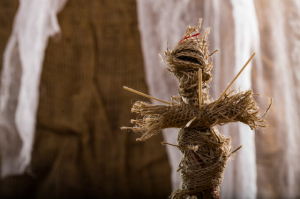by
Thomas Dworetzky, Contributing Reporter | February 04, 2016
Historically, only the voodoo priest who made a doll could know exactly what was inside one without destroying it — but a fascinating new study shows how, thanks to medical imaging technology, that is no longer the case.
Medical anthropology researchers have used X-ray to look into seven such Haitian dolls, so that forensic investigation would leave them unmarred. Keeping them intact is important both for anthropological and potentially legal reasons.
"Such a noninvasive technique permits the virtual autopsy of artifacts, and a better knowledge of magical-religious practices of Haitian voodoo," noted researchers Anaïs Augias, Nadia Benmoussa, Sophie Jacqueline, Julie Nogel Jaeger, Anne-Laure Muller and Philippe Charlier in their paper just published in the
Journal of Forensic Radiology and Imaging.
Voodoo is illegal in Haiti and punishable by prison sentence of as much as two years, said the researchers. One reason that forensic analysis is vital, they note, is that the creation of these objects may be part of premeditated harm or murder.
In their report, the researchers cited the following example of charmed dolls being used in actual crimes:
They made a collection in the village and, with the money and shirt of Ti-Joseph [stolen during the night by an accomplice], some men went to another bokor [priest] living in Trou Caiman, who made a death ouanga [doll] in a black bag, mixing together pierced needles, rubbed with goat droppings and wrapped with rooster feathers soaked in blood. Moreover, in case the ouanga weakened by magic against Ti-Joseph, would not be fast enough, they sent strong men in plain, waiting for Ti-Joseph, and cut off his head one evening with machetes.”
Since these dolls often contain objects, such as buttons, or hair and other identifiable material, the researchers explained that — with proper forensic analysis — they can be useful in establishing a case in court.
"The characterization of the fabrication process of voodoo dolls is of great interest for the legal investigation, as parts of the victim's body (hairs, nails) and clothes are included in these artifacts. They could be assimilated to a profanation of the human body's integrity, and be an aggravating factor for sorcery activities," they wrote. "To an ultimate degree, the making of such an artifact in the practicing voodoo Haitian populations, can lead to an assassination, and could then represent an evidence of premeditation."
The researchers analyzed a total of seven dolls using a flat panel detector Primax Clisis. Furthermore, additional examinations were done on organic material with a Leica EZ4 HD microscope. They found many items inserted into the voodoo dolls, such as needles, zippers or buttons, as well as human hairs.
This detailed examination, they suggested, will permit a better understanding of "the use, purpose, and fabrication process of these dolls."
